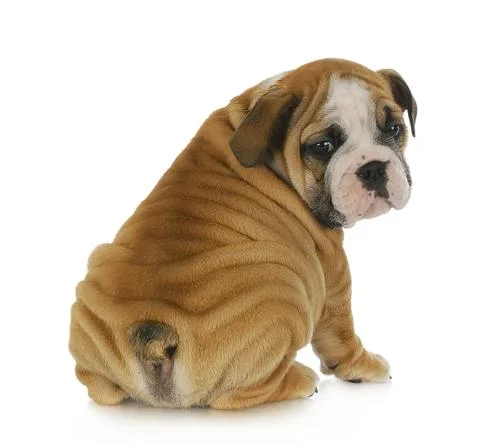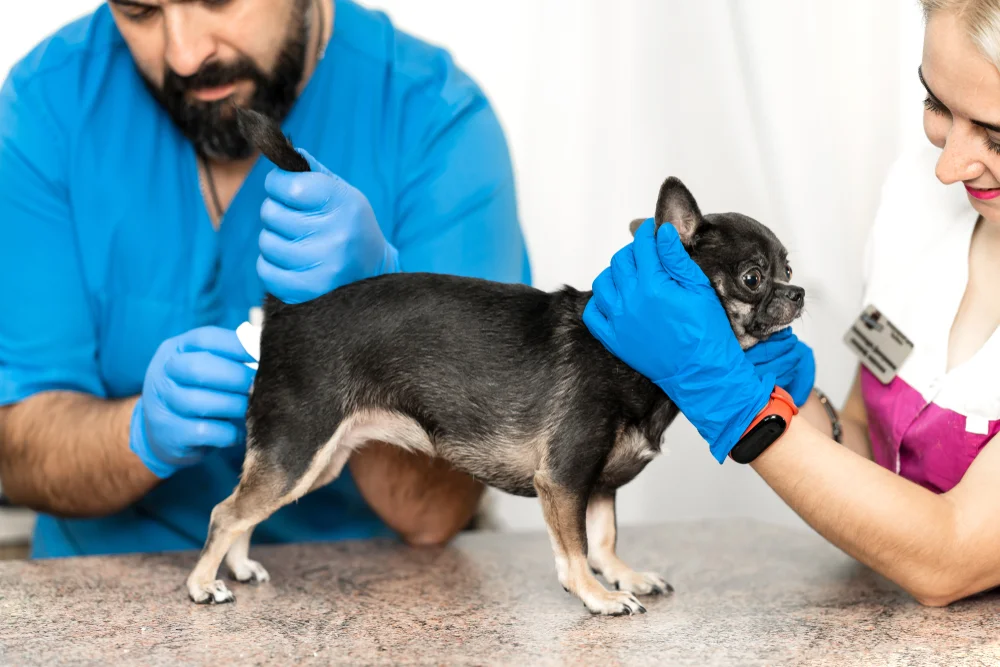Dog Anal Gland Smell: Dogs are known for their adorable faces, wagging tails, and propensity to get into trouble. But one of the less appealing facets of dog ownership is their anal gland smell.
What Are Anal Glands?

Do you know what anal glands are? Most people don’t, but they’re pretty important! These little glands secrete a smelly substance that helps dogs mark their territory.
we’ll discuss where the anal glands are located, what they do, and how to deal with an infected gland.
This fishy smell so-called Dog Anal Gland Smell can be difficult to get rid of, but with a little know-how, you can have your furry friend smelling sweet again in no time!
Keep reading for tips on how to get rid of that dreaded dog anal gland smell.
How to Get Rid Of Fishy Smell from Dog?
Dogs are a part of our family, and spending time with them is always fun. But what do you do when your pup has an unpleasant smell? It may be from their food or from playing outside, but there’s no need to worry because we have the perfect solution for getting rid of that fishy odor from your pooch!
Here’s how:
- Give your dog a bath in shampoo mixed with baking soda – this will remove any dirt and debris they picked up on their walk as well as neutralize any lingering odors.
- Rinse off the baking soda with cool water and towel dry your pup so they don’t catch a chill after they get out of the tub!
- Wash your dog with shampoo and conditioner
- Dry off the fur, brush it out, and apply a leave-in conditioner
- Brush teeth to remove tartar buildup
- Brushing under the tail helps expel excess skin oils that may be causing the smell
- Feeding your dog food with taurine can help reduce fishy odor in their urine or stool
- Adding probiotics to your pet’s diet can also help eliminate odors by restoring healthy gut bacteria levels
- Change water daily to keep bowls clean for longer periods of time
We recommend using oatmeal or baby shampoo for this! Scrub the body with a wet washcloth, then rub in cornmeal to dry off before they shake themselves all over again.
It’s not just about looking good, it’s also about smelling good. And if you want to go one step further, give them a bath in baking soda and vinegar so their fur is clean and smells fresh too!
What are the signs of anal gland issues in Dogs?
If you’re a dog lover, then you know that your pup’s anal glands can be a bit of a pain. Here are some signs that your pet might be experiencing issues with its anal glands.
- Symptoms of anal gland issues can include a bad smell from the pet’s anus, the appearance of droppings that are pasty and dry
- Causes for anal gland problems in pets can be diet related or due to an underlying medical condition
- Treatment options for anal gland disorders may involve antibiotics, pain medication, surgery, or dietary changes
- Prevention techniques for this disorder may include feeding your pet high-fiber foods and giving them plenty of fluid
If your pet is exhibiting any of these symptoms it could be anal sac disease as well, please consult with your veterinarian to get them the help they need!

What is anal sac disease
Anal sac disease also referred to as sacculitis, is a relatively common problem among dogs. The condition is caused by a bacterial or fungal infection that affects the anal sacs, which are located on each side of the dog’s anus.
Symptoms of anal sac disease can vary depending on the severity of the infection but may include inflammation, swelling, and drainage from the anus.
Left untreated, anal sac disease can lead to serious health complications for your pet.
Fortunately, this condition is typically easy to treat with antibiotics or antifungal medications.
Symptoms of anal sac disease
If your dog has been showing symptoms like scooting their bottom along the ground, having difficulty passing stool, or excessive licking of their anal area, they may be suffering from this condition and should be seen by a veterinarian.
How to treat anal sac disease
Anal sac disease is a common problem in dogs that can cause a lot of discomfort. If your dog has been diagnosed with anal sac disease, there are a few things you can do to help make him more comfortable.
The human nose is not the only sense that dogs can use to detect scents. Anal sacs, found at indoor doodle dirt and bad smells as well in other places like under furniture or near trash cans may need extra attention from your vet if they begin producing an odor due to them being full of fluids which are more concentrated than urine but still less noticeable compared with feces and bodily wastes
Here’s how: Your dog will likely go through some type of discomfort while his anal cavity gets emptied out before things get better eventually – this procedure doesn’t always work perfectly because sometimes these sac problems just won’t let themselves be resolved so easily Many vets recommend high fiber foods since it helps encourage naturally expressed
The importance of a healthy diet for your dog’s overall health
Dogs are like humans in that they need to eat healthy foods in order to maintain good health. Just like us, dogs can suffer from obesity and other health problems if they don’t eat a balanced diet.
Dogs are like members of the family, and just like humans, it’s important to make sure they’re eating a balanced diet. Dogs that eat healthy diets have fewer health problems and tend to live longer lives.
Conclusion
As the dog’s anal glands fill up with fluid, they release a musky odor. This natural scent is only noticeable when dogs are in heat or have been stressed out by something at home. If you notice this smell and think it might be your pet’s anal gland issue, take them to your vet for a checkup!

